The devastating results of the monstrous Great Fire of 1835 helped change the course of Manhattan — hastening the residential migration up the island, rewriting the architectural nature of downtown and essentially erasing the past. There would never be another fire of such intensity and magnitude.
But New York didn’t suddenly become fire-proof.
In fact, ten years later came another massive blaze, in almost exactly the same place, that threatened to halt downtown’s rebirth before it even began.
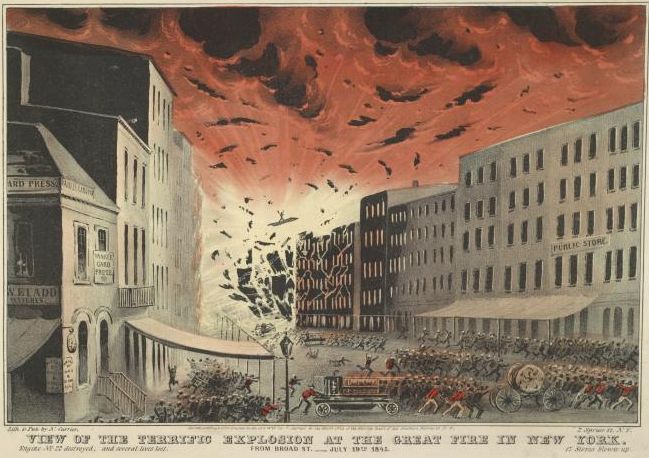
Some distinct circumstances set it apart from the prior, more destructive blaze.
It occurred before the crack of dawn on Saturday, July 19, 1845, on the third floor of an “whale oil store” on New Street — only a couple blocks from where the Great Fire of 1835 had started.
Normal summertime temperatures, sunlight creeping onto the horizon, and an influx of people going about their early morning business likely might have ensured that the blaze would have been swiftly contained.
Unfortunately, a warehouse owned by the merchants Crocker & Warren, just a block away at 38 Broad Street, was filled with a new shipment of saltpetre, used for the manufacture of gunpowder.
Fire wafted in through an opening in one of the store’s open iron shutters, and the result was a series of cannon-like bursts of smoke and fire, almost like a volcano, smashing into buildings across the street.
It culminated in a terrible, final explosion, completely engulfing the block. The explosion was heard as far away as Sandy Hook, New Jersey.
A breathless account in the New York Tribune prints this description — “an amphitheater of blood-red flame”:
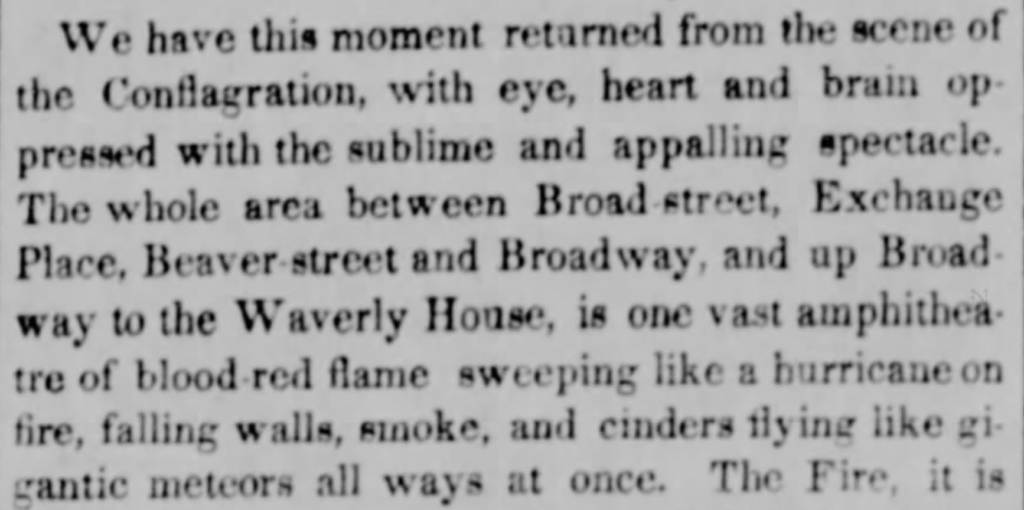
An account from 1888 described it as:
“an immense body of flame… it instantly penetrated at least seven buildings, blew in the fronts of the opposite houses on Broad Street, wrenched shutters and doors from buildings at some distance from the immediate scene of the explosion, propelled bricks and other missiles through the air, threw down many individuals who had gone as far as Beaver Street, spread the fire far and wide, so that the whole neighborhood was at once in a blaze, and most unfortunately covered up the [fire company’s] hose…. After this the firemen could with difficulty obtain any control over the conflagration.”
This new blaze spread south, down as far as Bowling Green, in total destroying between 300 and 350 buildings, most of which had been partially damaged by the blaze ten years before.
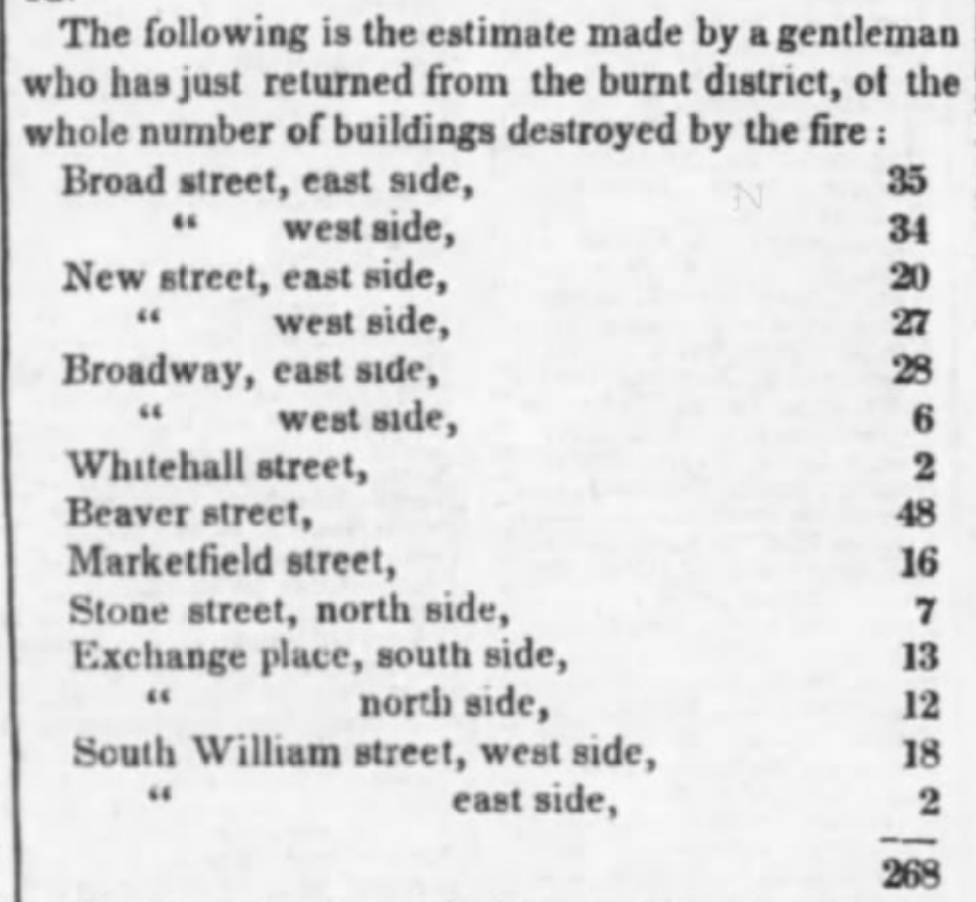
The financial cost to the city was great, although significantly less than that of the blaze of 1835, somewhere between $6 and $10 million.
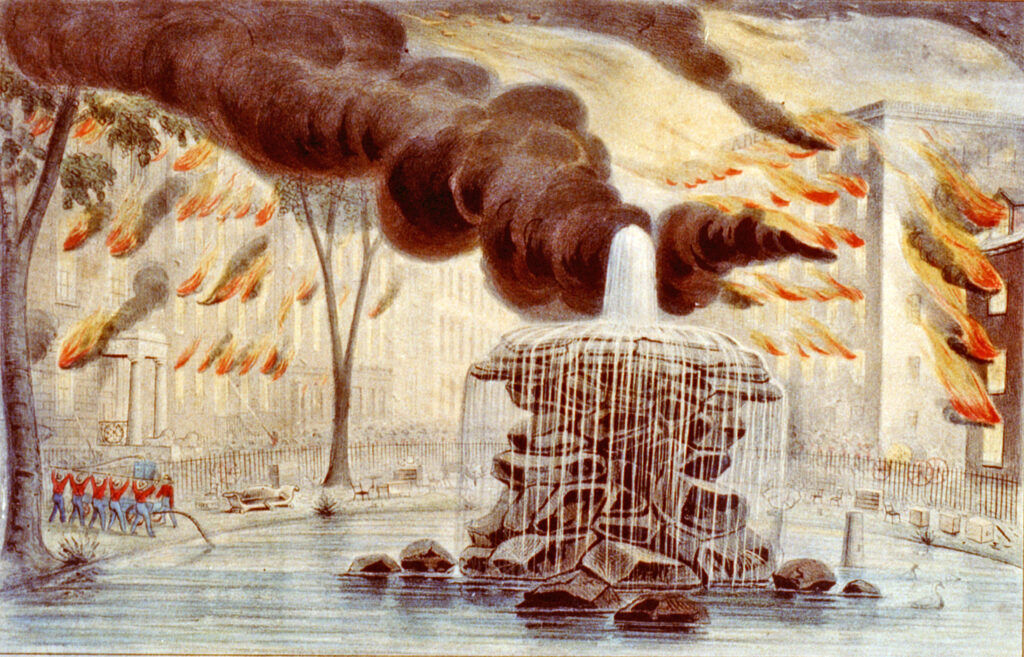
A guide book from 1877 assesses the damage at $7 million, but interestingly attributes the rebuilding of the affected blocks to a “constant influx of gold from the seeming exhaustless resources of the El Dorado and the Pacific.”
This fire might have grown to swallow up all of downtown had the Croton Reservoir not been completed a few years before, providing a steady stream of water to put out the flames.
However, perhaps due to the awful and sudden explosion, the fire of 1845 bests that of the 1835 inferno in one unfortunate statistic: the number of fatalities.
Where only two people had died in the larger fire, at least 30 people died that July morning, including a few volunteer firefighters like lawyer Augustus L Cowdrey, whose body was never found.
It’s through Cowdrey’s memory that you can actually find a reminder of the 1845 fire in downtown Manhattan.
In the graveyard at Trinity Church on Broadway and Wall Street sits a tall obelisk, a fireman’s memorial engraved with the names of many fallen fighters of the 19th century, including that of Cowdrey.

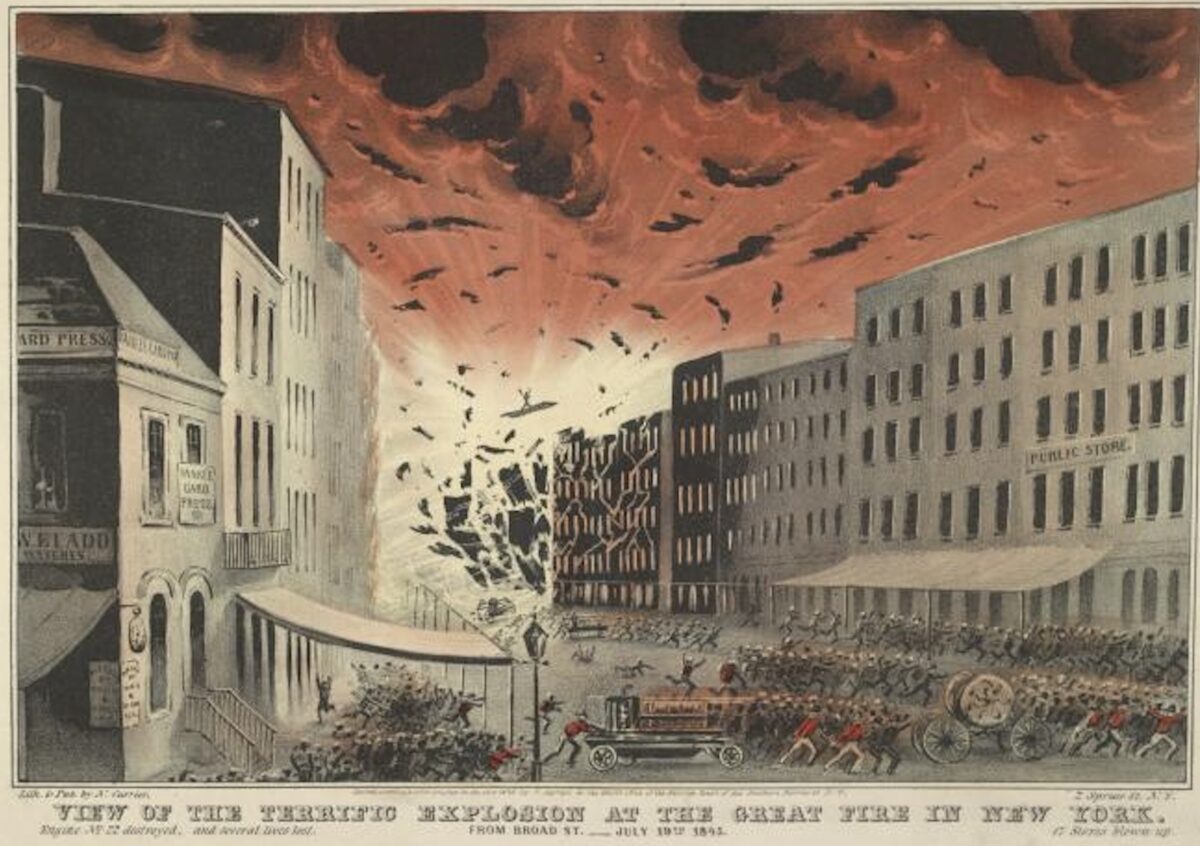
6 replies on “The Great Fire of July 19, 1845: Lower Manhattan in Flames”
Just started reading a book entitled “The Gods of Gotham” by Lyndsay Faye, which uses the fire of 1845 as its backdrop.
“The Gods of Gotham” by Lyndsay Faye also brought me here. May I also recommend “Forever” by Pete Hamill.
The Brooklyn Nine by Alan Gratz also covers the fire of 1845.
Thats what brought me here.
Brooklyn Nine is what brought me here today exactly 8 years after your post. Alan Gratz is one of my favorites and somehow I missed this one till now.
[…] The novel is rich in historical facts and details, many of which I could easily verify and dig into (For example, Faye used the real name of the first NYPD chief, George Matsell. You can read more about him here). Moreover, the fire at the beginning of the novel is real (The great explosion of 1845) […]
I recall in the novel TIME AND AGAIN by Jack Finney which I read a long time ago, that there was a fire scene. I wonder if that was the same fire or not?